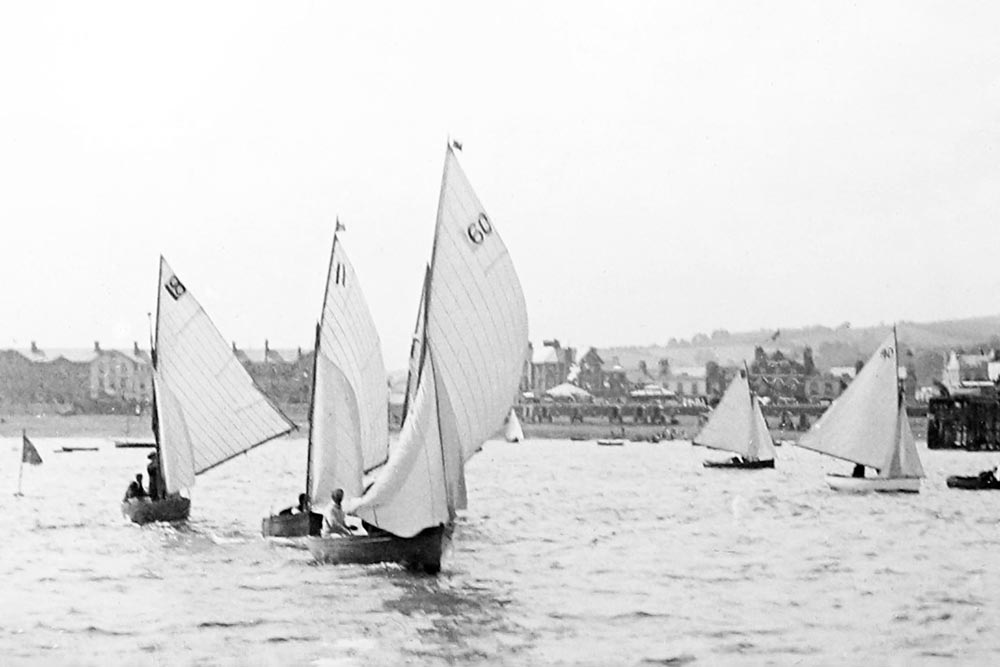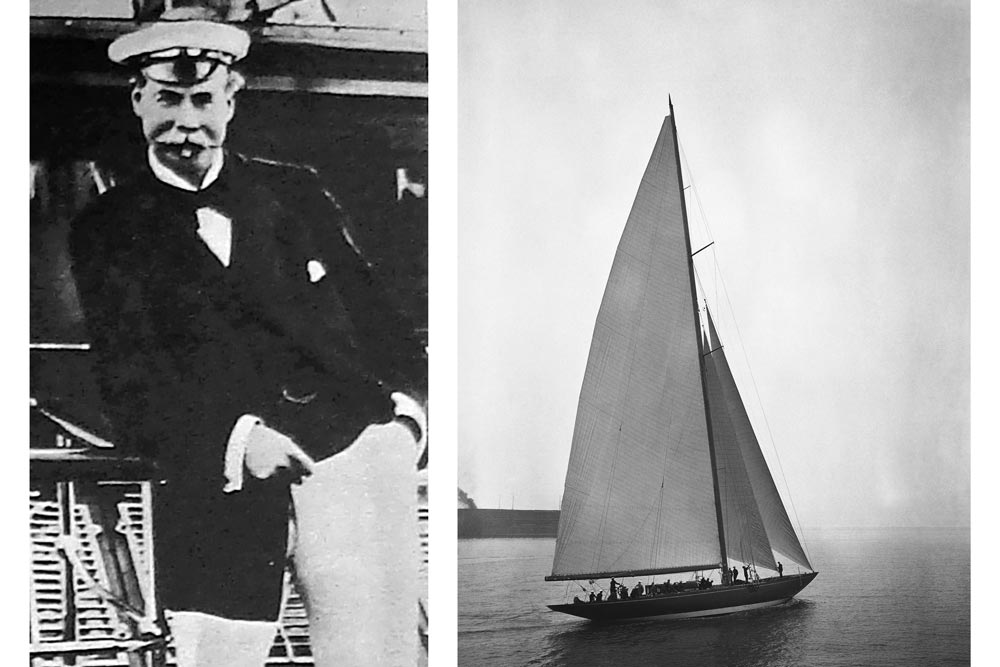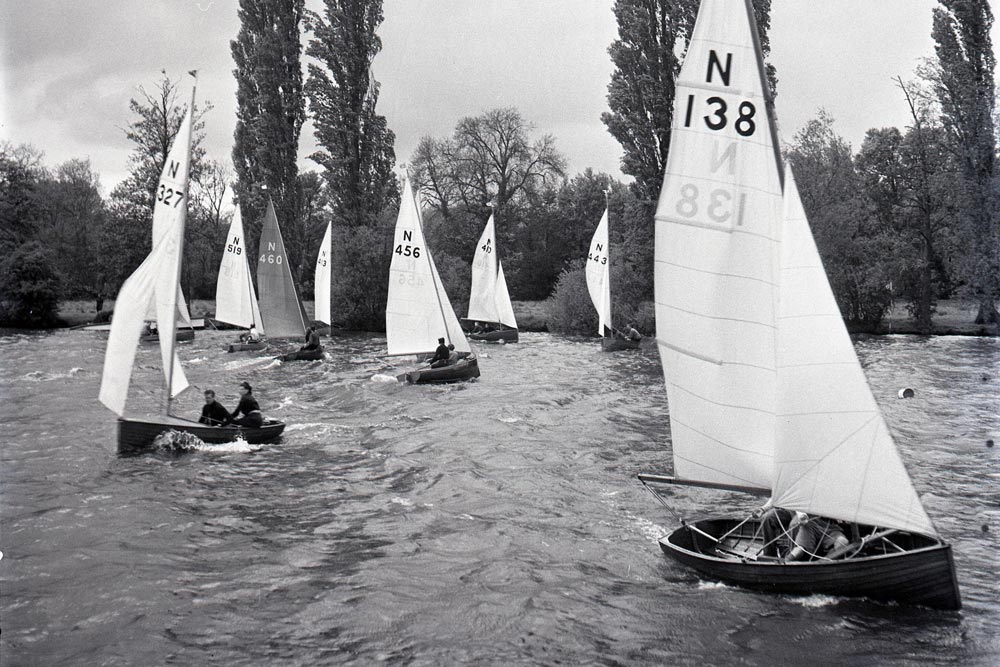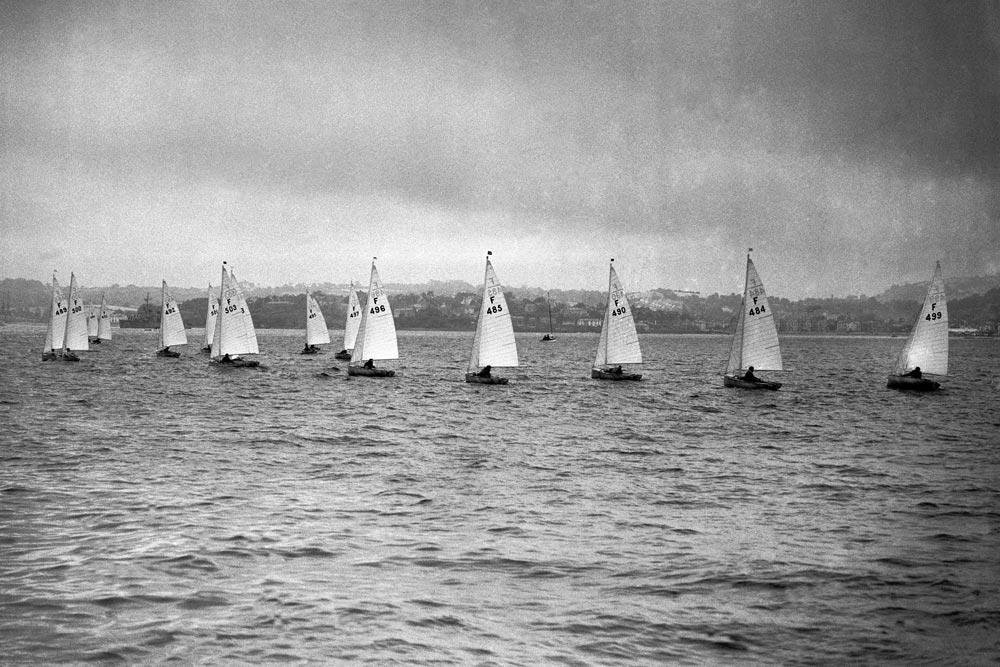1925 – 1950

After taking on responsibility for the dinghy scene, which was still in its infancy, the YRA was now the official home of all things sailing in the UK.
Just how diverse the Association was having to be is noticeable in the second half of the 1920. The Royal Victoria Yacht Club’s Ocean Race for yachts was rebadged as the Fastnet Race, while the growing importance of the National 14 ft dinghy class would be recognised when they were gifted a new trophy, the Prince of Wales Cup, which was raced at Cowes on the Isle of Wight. Clearly, racing in all its forms, was still core to the YRA’s activities.
The ‘roaring twenties’ would end with the YRA undertaking a complete overhaul of the racing rules that would now apply to all craft, irrespective of their size. This would also be the first time the YRA became a publisher, as they had Rule Books printed that were then sold for a shilling a copy.

The 1930s were difficult times for all areas of society in the UK, with the world of sailing not immune from the changes in social attitudes. However, the Royal Yacht Squadron had still managed to blackball one of our best chances for success in the America’s Cup, Sir Thomas Lipton, on the grounds that he was a grocer. Whilst a young Jack Holt would be denied entry to the yacht clubs hosting International 14 events because he was a boatbuilder, therefore an artisan and not a ‘gentleman’.
As early as the mid-1930s, the YRA was expressing concerns about the growing importance of ‘cheque book’ sailing within the International 14 fleet, so welcomed moves to introduce a smaller, less expensive boat that they would administer as the National 12 ft class dinghy. Even as this exciting development was gaining its great reputation for hot competition, the lights were going out across Europe, though the YRA was very supportive of initiatives that kept National 12s racing on the Thames throughout the long years of war.

Even before the joyous restoration of peace in 1945 had been celebrated, the talk in sporting circles had been on the importance of resurrecting the Olympics Games, as this was seen as a way of reuniting nations. Despite painful shortages of everything, from food to accommodation, London was chosen as the host city, but for a while nation-wide austerity suggested that there wouldn’t be the resources the capability to run an Olympic Regatta. Ryde, on the Isle of Wight, which had hosted the yachting back in 1908 was no longer considered suitable and the YRA’s first choice of venues, Weymouth and Portland, were full of Navy ships being paid off.
Still, the YRA was confident that not only could they host the regatta, but they could run it in such a way that made it revenue positive. The traditional classes would all compete, including the Dragon, Star and 5.5m, joined by a new YRA National Class, the Swallow. The only difficulty that remained was to find an Olympic single-handed dinghy.

Now a new development would come to the aid of the YRA. Concerned that what was classed as ‘restricted development’ dinghies, such as the International 14 and National 12, were making small boat sailing too expensive, they had instigated a design competition for a National 12ft One Design dinghy which had been won by an Uffa Fox’s pre-war design that was now being hot-moulded by Fairey Marine at Hamble. What is key here is that the boat, the Fairey Firefly, was what we would now describe as a SMOD: a Single Manufacturer One Design, as Fairey Marine only sold the boat as a package, complete with spars, sails and fittings. A deal was done between the YRA and Fairey Marine which saw 24 Firefly dinghies pressed into service as the Olympic single hander, despite them being a two person boat by design. Once the regatta was over, the Fireflys were lined up on the beach and sold off ‘as seen’, with a number going to schools and colleges, a move that gave domestic dinghy sailing a further boost.
The growing successes of the Firefly, along with the National 12 and International 14, would now help steer the YRA towards one of its greatest and most important of legacies. Although small boat sailing was buoyant around our coasts, there was much potential for growth on the large stretches of inland water, particularly large reservoirs. In what can now be seen as an inspired move, the YRA would take the lead on driving through the changes that would open these great areas up for leisure sailing. In doing so they were laying one the foundations for a golden era that would be building momentum, as the 1940s gave way to a new decade.
